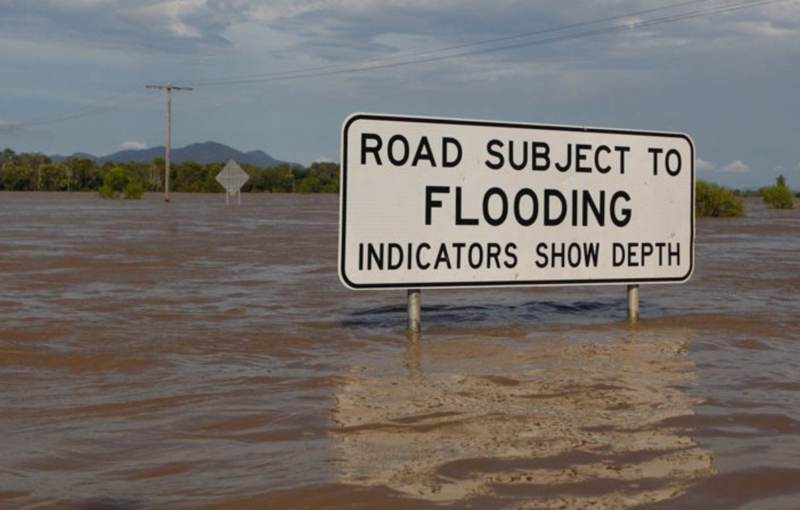Global insured losses from floods accelerate, double in a decade: Swiss Re

Globally, insurance and reinsurance market losses from flooding have accelerated significantly, with a doubling in the total in a decade to reach US $80 billion over the 2011 to 2020 period, but then another acceleration into 2021 when they reached $20 billion alone.
This is according to global reinsurance giant Swiss Re in a recent economic insights report, in which the company looks at the trends affecting global flood insured losses.
The trends of economic growth, increasing populations and rapid urbanisation around the globe remain the primary drivers of rising flood losses, Swiss Re explained.
But over the last decade, rainfall levels and climate change have emerged as key factors shaping loss outcomes, according to the reinsurance company.
While insured losses from flood events around the globe have reached new highs, with almost $100 billion since 2011, there remains a significant flood risk protection gap.
In fact, Swiss Re’s analysis suggests that only 18% of flood losses were actually insured over that period, making the economic loss from flooding far higher.
Things are improving though, as the insurance and reinsurance industry, supported by data analytics and modelling firms, get better at covering flood risk.
“While floods were previously considered uninsurable, better quality data, sophisticated risk mapping and modeling that incorporates detailed hazard and vulnerability enable more accurate pricing of flood risk, which in turn created opportunities for growth of the private sector of flood insurance,” Swiss Re says in its report.
Flood impacts are likely to continue increasing as well, especially when you consider the volume of populations that are at-risk of flooding.
In the United States, 40% of the U.S. population lives in coastal counties and 10% lives in floodplains, Swiss Re notes, but still, “While flooding has an increased likelihood to occur in areas with soil sealing caused by intense urbanization and rising temperatures, the household flood insurance take-up rates are low at only 4%.”
Private insurance market appetite for flood risk is increasing, as too is reinsurance market appetite and we now even see dedicated flood risk catastrophe bonds, such as those from FEMA.
So risk capital is becoming less of an issue, when it comes to flood exposures, meaning there is a likelihood that flood insurance penetration grows and more private coverage becomes available over time.
But there is a significant flood risk protection gap to fill and events in recent days in Pakistan drive home the importance of flood insurance in economies still considered to be developing as well.
The humanitarian impacts of flooding are often far greater than its economic toll, so the global insurance, reinsurance and insurance-linked securities (ILS) market also has a role to play in developing solutions, possibly parametric in nature, that can provide important disaster risk protection in emerging parts of the world.
The gap in coverage is also very evident in the United States, where state backed insurance under the NFIP continues to pick up a lot of the bill from flooding, or homes remain completely uninsured for flood.
“The recent events in Kentucky, Mississippi and Texas are a sad reminder of how devastating floods can be to our lives,” Keith Wolfe, President US P&C, Swiss Re commented on the US situation.
“Despite the private flood insurance market gaining traction over the last few years, too many people are still not covered for flooding and the majority of those impacted by these events are uninsured, leaving them to pick up the pieces at their own expense.”
“The incentive for the insurance industry to protect more households in the US is two-fold. First, and most importantly, the insurance industry can play a significant role in helping communities get back on their feet following a disaster. In addition, this business can now be underwritten with greater confidence than ever before thanks to significantly improved modeling.”
“Flood risk is in a lot more places than your mortgage company tells you. Every insurance agent needs to understand what is available in the private market to offer the broadest set of options to our woefully underinsured community members.”
Summing up what’s required to stimulate more of the flood risk around the globe to be insured, Swiss Re explained, “Given the scale of loss potential, robust risk assessment anchored to high- quality and high-resolution data is key to flood insurance expansion as a complement to disaster resilience investment.”
——————————————————————— Tickets are selling fast for Artemis London 2022, our first ILS conference in London. Sept 6th, 2022.
Tickets are selling fast for Artemis London 2022, our first ILS conference in London. Sept 6th, 2022.
Register soon to ensure you can attend.
Secure your place at the event here!
—————————————






